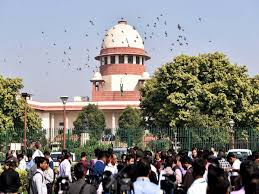National Mission for Cultural Mapping (NMCM)
Why in News?
In a bid to harness the unique cultural heritage of rural India, the government has identified and documented distinctive features of more than one lakh villages across the country.
The entire exercise has been carried out under the ‘Mera Gaon Meri Dharohar‘ (My Village My Heritage) programme of the National Mission for Cultural Mapping (NMCM).
What is the Mera Gaon Meri Dharohar Programme?
About Cultural Mapping:
The process involves identification and mapping the cultural assets and art repositories of the nation i.e., art expressions, crafts and skills, wisdom tradition and other cultural practices whether oral, aural, visual or kinetic.
Information about the ritual, social and economic status of artists and craftsmen within the community is also of relevance and is to be noted during the cultural mapping.
Categories of Villages:
Villages have been categorized into seven to eight categories based on ecological, developmental, and historical significance, as well as cultural aspects such as famous textiles or products or connected to some historical or mythological events such as the Independence struggle or epics like the Mahabharata.
Ecological Category:
Bishnoi village in Rajasthan is a case study for living in harmony with nature.
Raini village, which is famous for the Chipko movement.
Developmental Importance:
Modhera in Gujarat is the first solar-powered village in India.
Historical Villages:
Kandel in now in chattisgarh the site of the famous "Jal Satyagraha".
|
Kandel in Dhamtari Tehsil. Pandit Sundarlal Sharma (21 December 1881 — 28 December 1940) was a key figure in the independence movement from Chhattisgarh. He was largely responsible for ushering in political and social consciousness to Chhattisgarh. In 1920, he started the canal satyagraha, also known as the Nahar satyagraha, at a village called Kandel in Dhamtari Tehsil. Chhattisgarh has a university in the name of Pandit Sundarlal Sharma |
Hanol in Uttarakhand and Vidurashwathar of Karnataka, which are linked to the Mahabharata.






.jpg)
.jpg)
.jpg)





